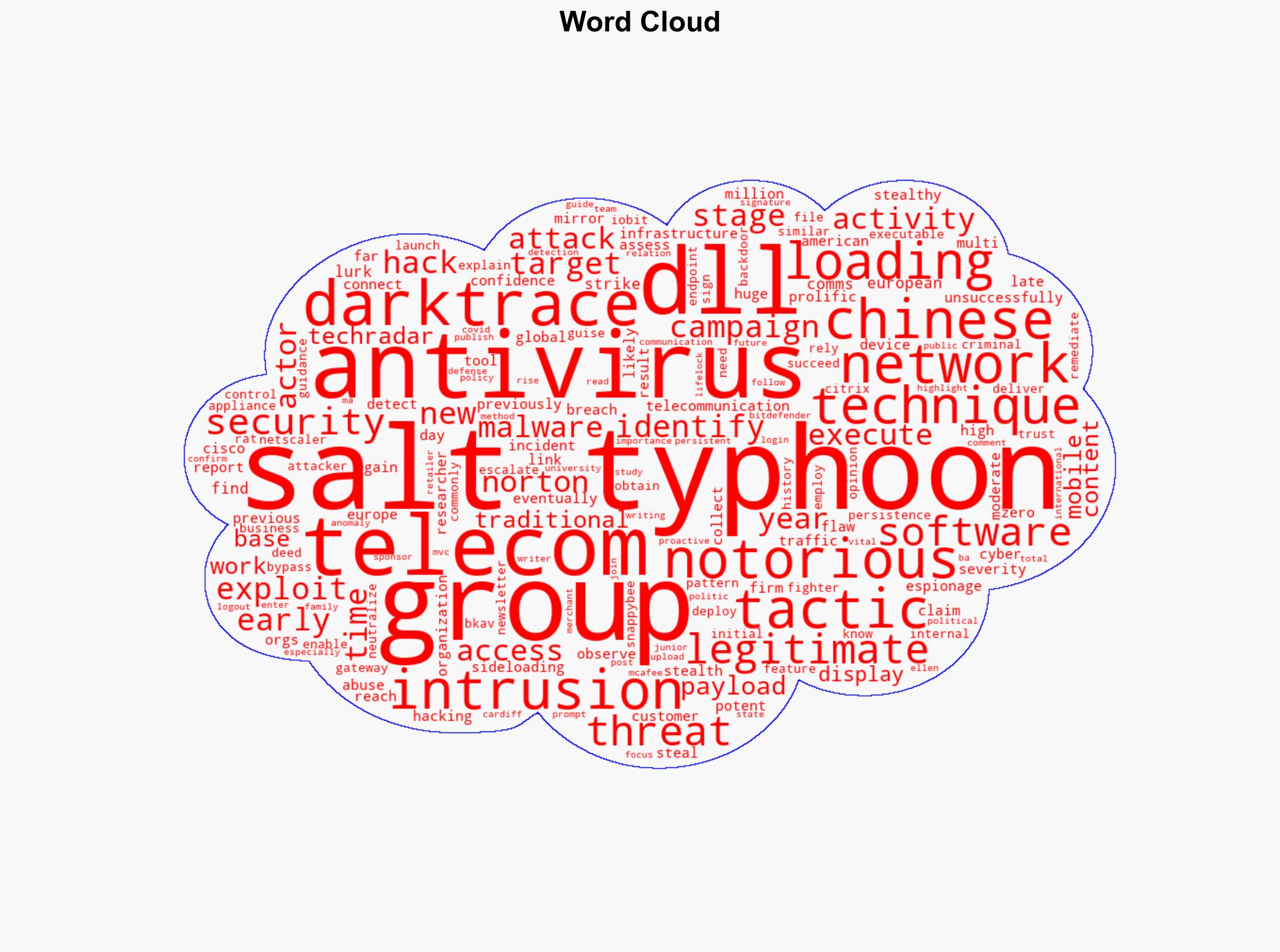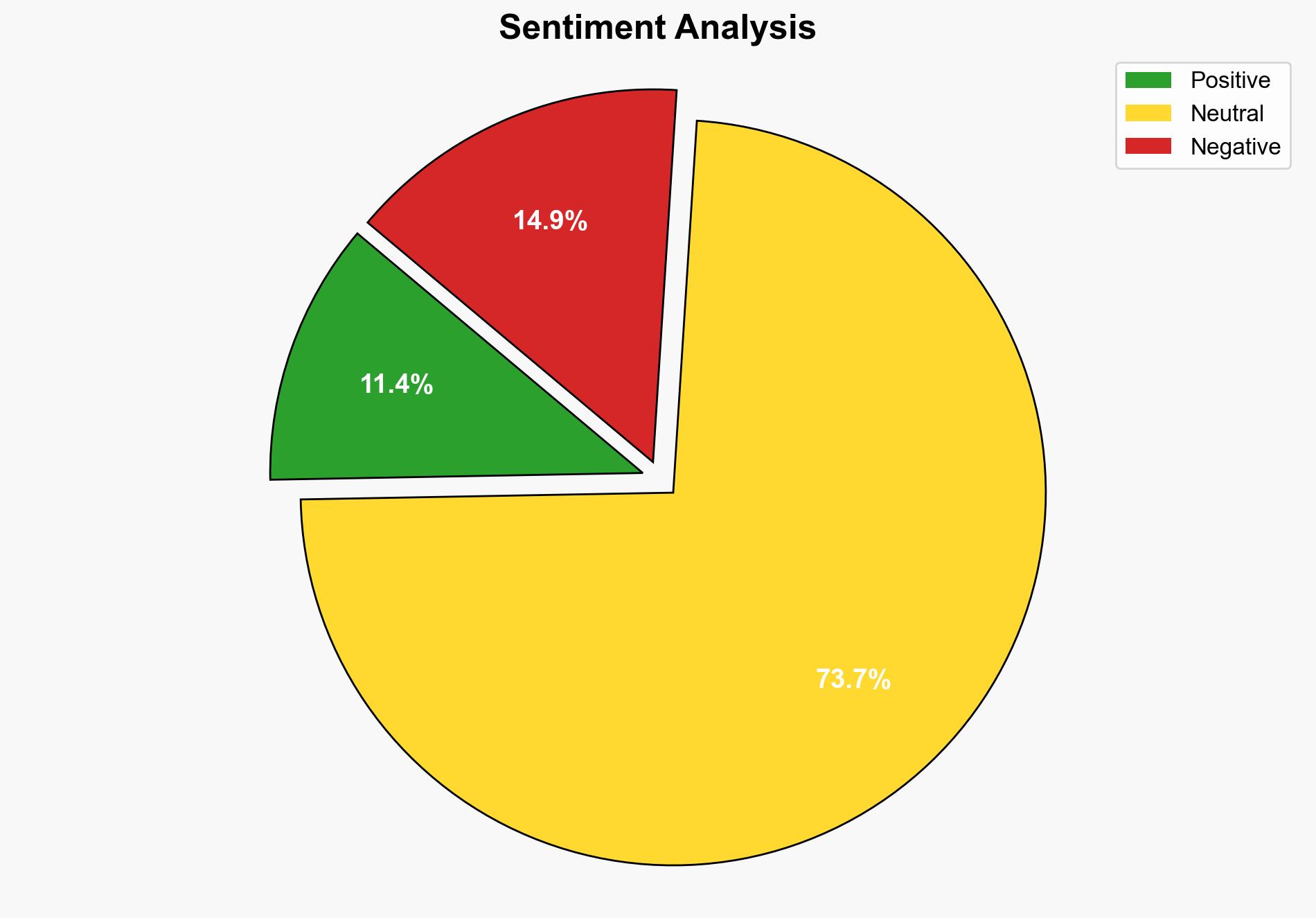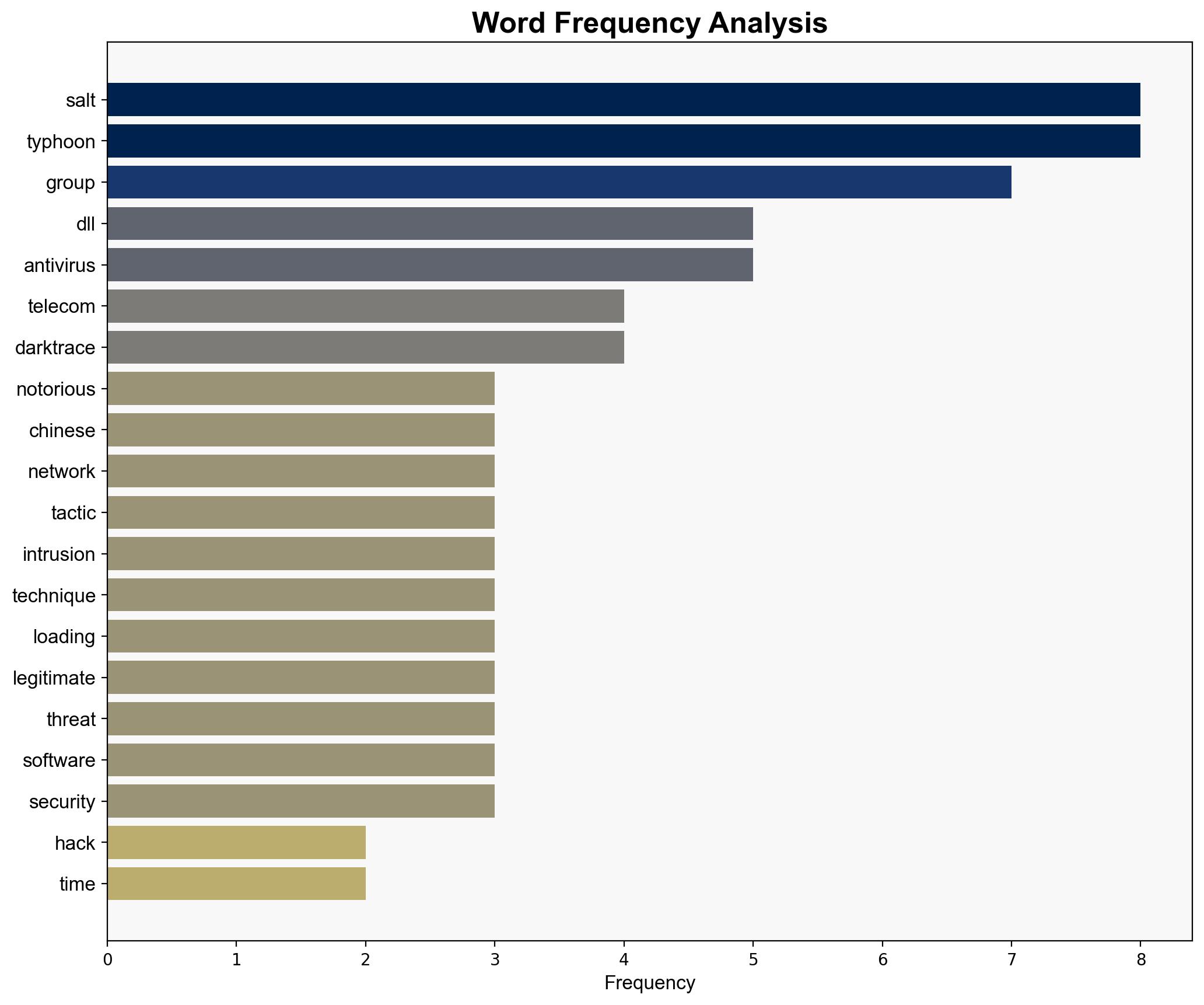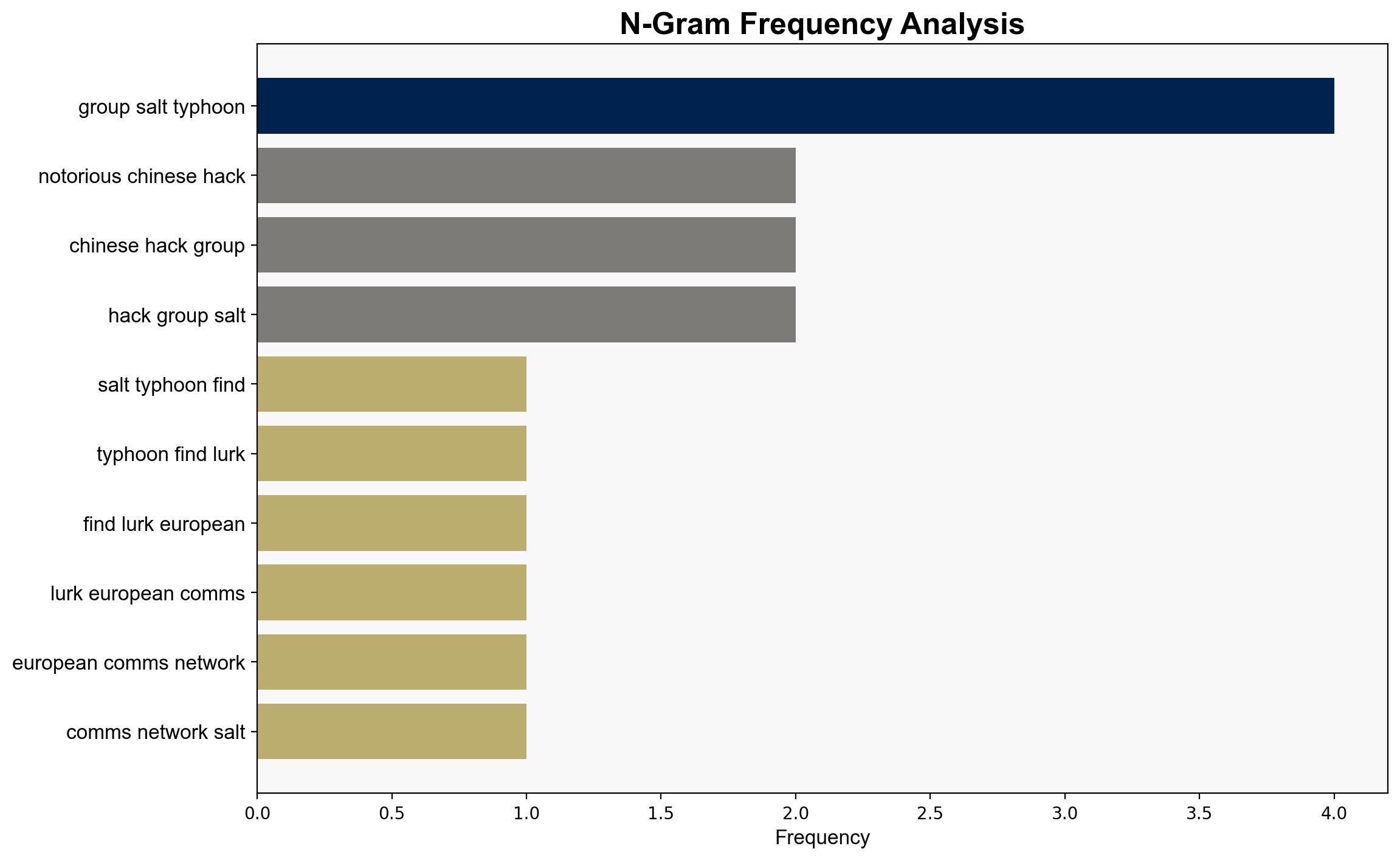Notorious Chinese hacking group Salt Typhoon found lurking in European comms networks – TechRadar
Published on: 2025-10-21
Intelligence Report: Notorious Chinese hacking group Salt Typhoon found lurking in European comms networks – TechRadar
1. BLUF (Bottom Line Up Front)
The most supported hypothesis is that Salt Typhoon is conducting a strategic cyber espionage campaign targeting European telecommunications networks to gather intelligence and potentially disrupt communications. This assessment is made with moderate confidence due to the consistent use of sophisticated techniques and historical patterns of behavior. Recommended action includes enhancing anomaly-based defense mechanisms and international collaboration to mitigate this threat.
2. Competing Hypotheses
1. **Hypothesis A**: Salt Typhoon is engaged in a state-sponsored cyber espionage campaign aimed at gathering intelligence from European telecommunications networks. This aligns with their historical tactics and the strategic value of such targets.
2. **Hypothesis B**: Salt Typhoon’s activities are primarily focused on financial gain through the exploitation of vulnerabilities in telecommunications networks, possibly as a cover for broader espionage activities.
Using the Analysis of Competing Hypotheses (ACH) 2.0, Hypothesis A is better supported due to the consistent use of sophisticated techniques like DLL sideloading and zero-day exploits, which are characteristic of state-sponsored actors rather than financially motivated cybercriminals.
3. Key Assumptions and Red Flags
– **Assumptions**: It is assumed that Salt Typhoon’s tactics and targets are consistent with state-sponsored objectives. The reliance on historical patterns may overlook novel motivations or tactics.
– **Red Flags**: The report’s reliance on a single source (Darktrace) may introduce bias. The absence of corroborating evidence from other cybersecurity firms or government agencies is a potential blind spot.
– **Deception Indicators**: The use of legitimate tools and software to mask activities suggests a deliberate attempt to avoid detection, indicating sophisticated operational security measures.
4. Implications and Strategic Risks
The persistent targeting of telecommunications networks poses significant risks to national security and economic stability. Successful intrusions could lead to data breaches, disruption of services, and loss of sensitive information. Escalation could result in broader geopolitical tensions, particularly if evidence of state sponsorship is confirmed. The psychological impact on public trust in digital infrastructure could also be profound.
5. Recommendations and Outlook
- Enhance anomaly-based detection systems to identify and mitigate sophisticated threats like DLL sideloading.
- Strengthen international collaboration for intelligence sharing and coordinated responses to cyber threats.
- Conduct regular security audits and vulnerability assessments of critical infrastructure.
- Scenario Projections:
- Best Case: Improved defenses deter future attacks, and international cooperation leads to attribution and diplomatic resolution.
- Worst Case: Successful breaches lead to significant data loss and service disruptions, escalating geopolitical tensions.
- Most Likely: Continued attempts with varying degrees of success, requiring ongoing vigilance and adaptation of defense strategies.
6. Key Individuals and Entities
– Salt Typhoon (hacking group)
– Darktrace (cybersecurity firm)
– Cisco (technology company, referenced for vulnerabilities)
– Citrix (technology company, referenced for vulnerabilities)
7. Thematic Tags
national security threats, cybersecurity, counter-terrorism, regional focus





